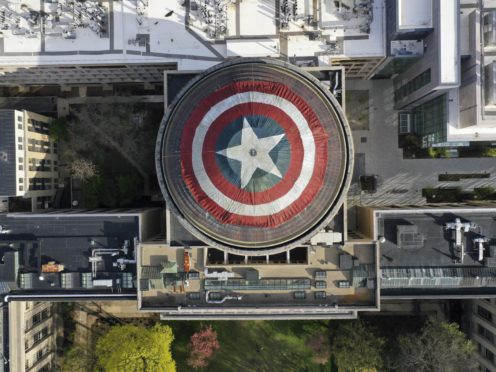Student pranksters at the Massachusetts Institute of Technology have struck again, drawing inspiration from Avengers: EndGame.
Over the weekend, MIT students draped the US university’s signature Great Dome with a giant cloth version of Captain America’s red, white and blue shield.
Their efforts drew a “Very cool!” on Twitter from actor Chris Evans, the Massachusetts native who plays Captain America in the film.
Very cool! https://t.co/jMQEPtnQdu
— Chris Evans (@ChrisEvans) April 29, 2019
The shield went up on Saturday night and was taken down on Monday morning.
MIT students have for generations centred similar pranks, which they call “hacks”, on the dome.
A realistic police cruiser was placed on the dome in 1994, and in 1999 it was decked out to look like R2D2, the robot from Star Wars.
Raymond Huffman, a 20-year-old from New York’s Long Island, said he didn’t have anything to do with this year’s prank, but posted on YouTube aerial video he shot from his drone, that has since generated tens of thousands of views.
Huffman said a friend involved in the prank told him the group had spent about six months planning it.
The prank tradition isn’t an annual event at MIT and tends to happen spontaneously by groups of students who, for the most part, want to remain anonymous, he added.
“It’s kind of cool to see the hacking culture has been maintained,” Huffman said. “These are things you hear about when you first come to MIT.”
